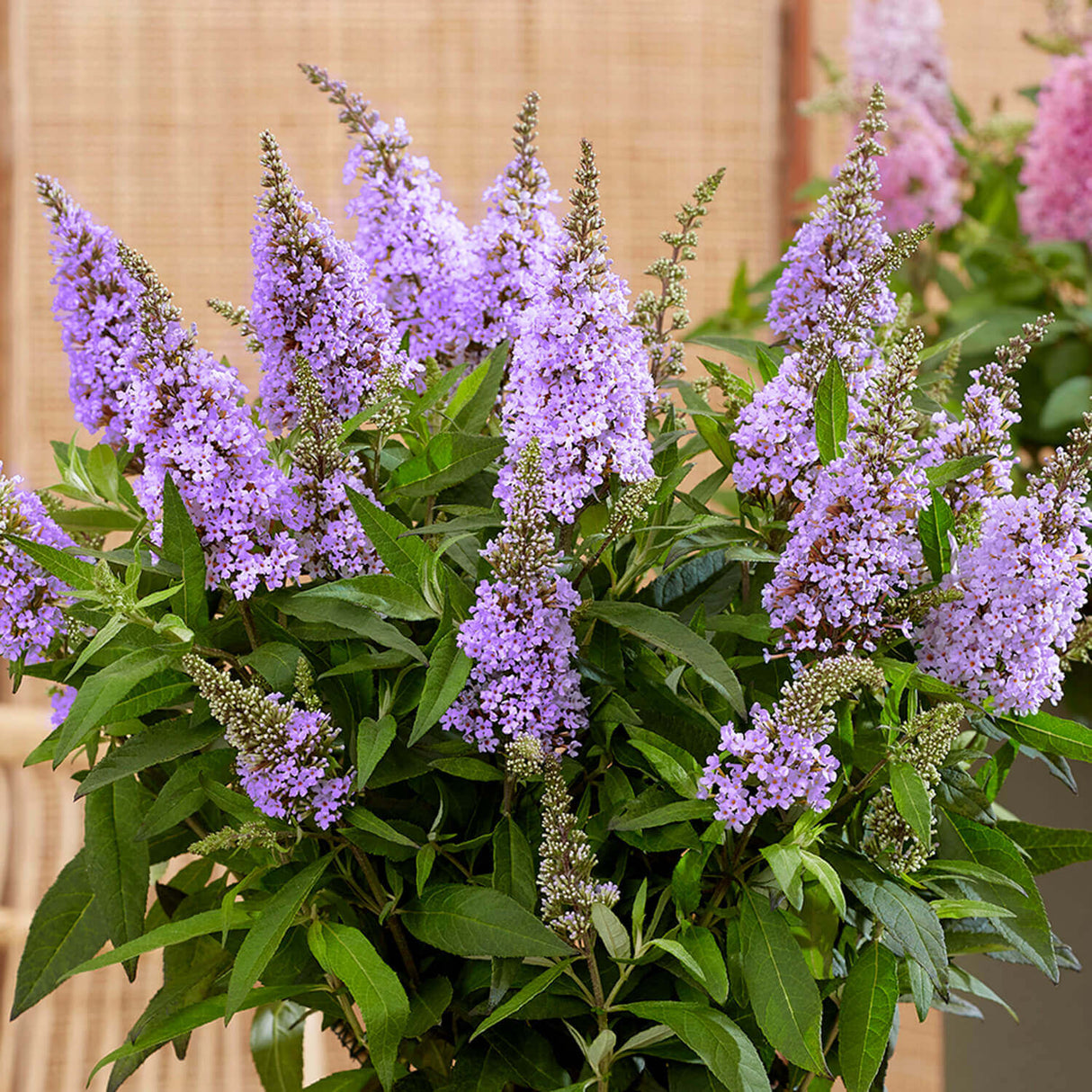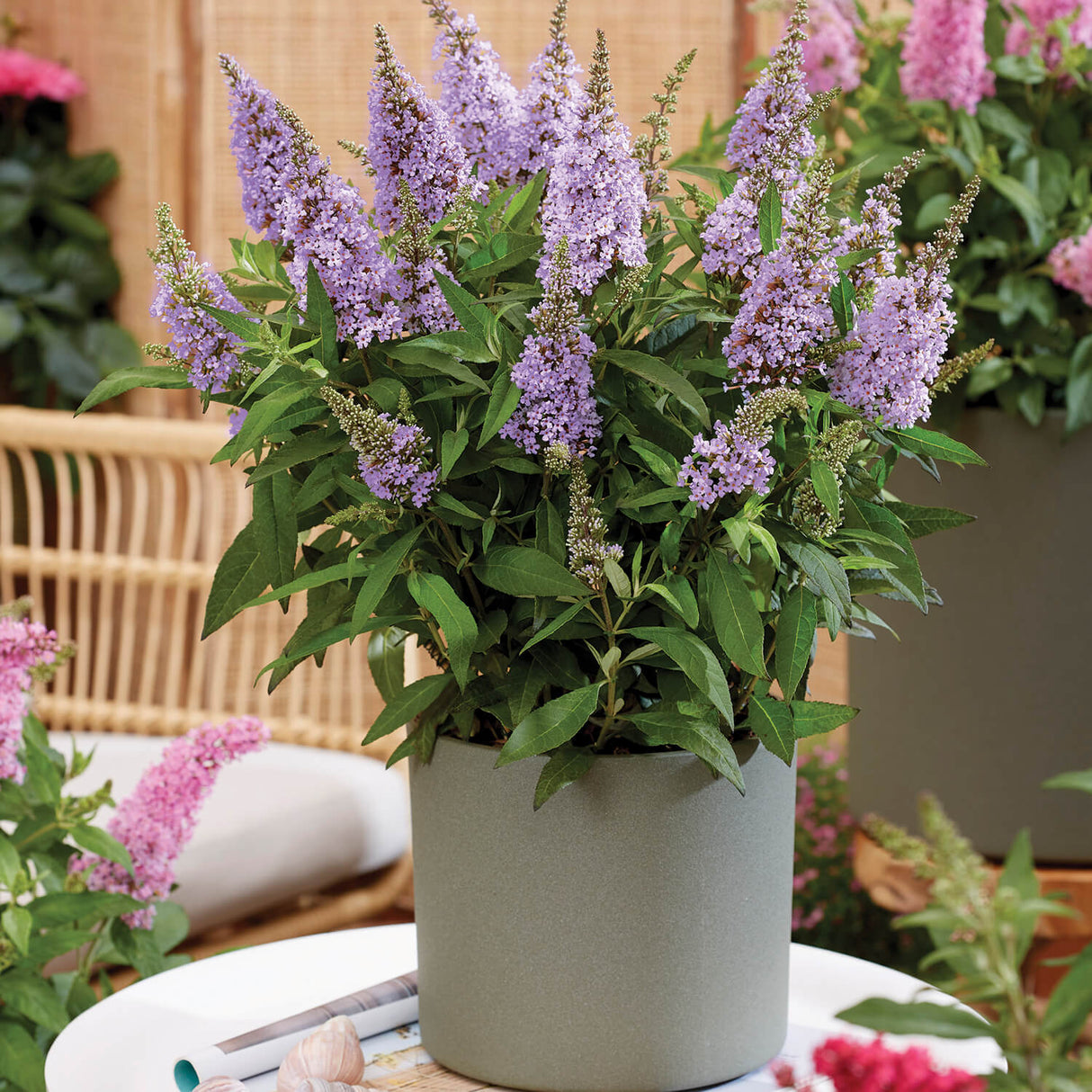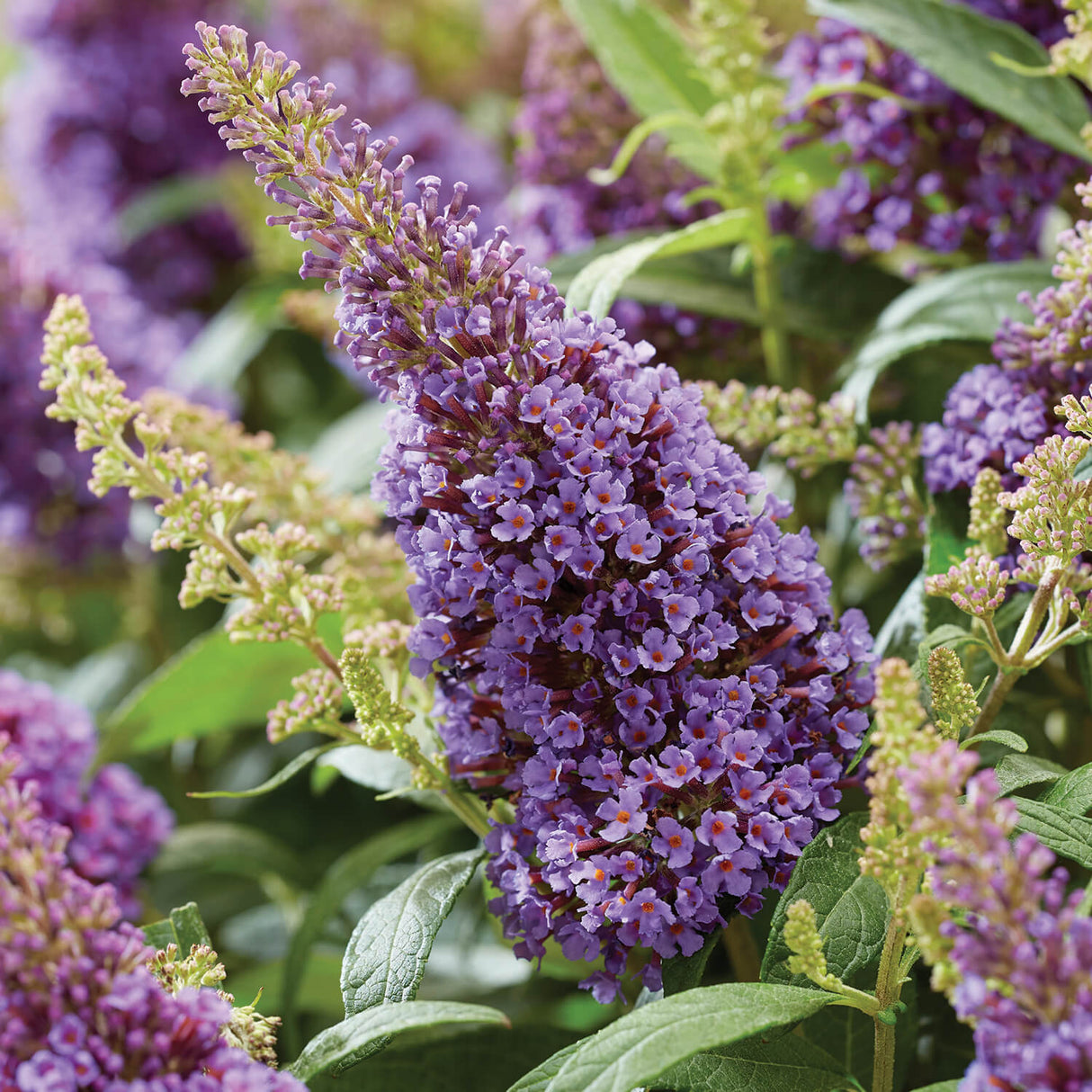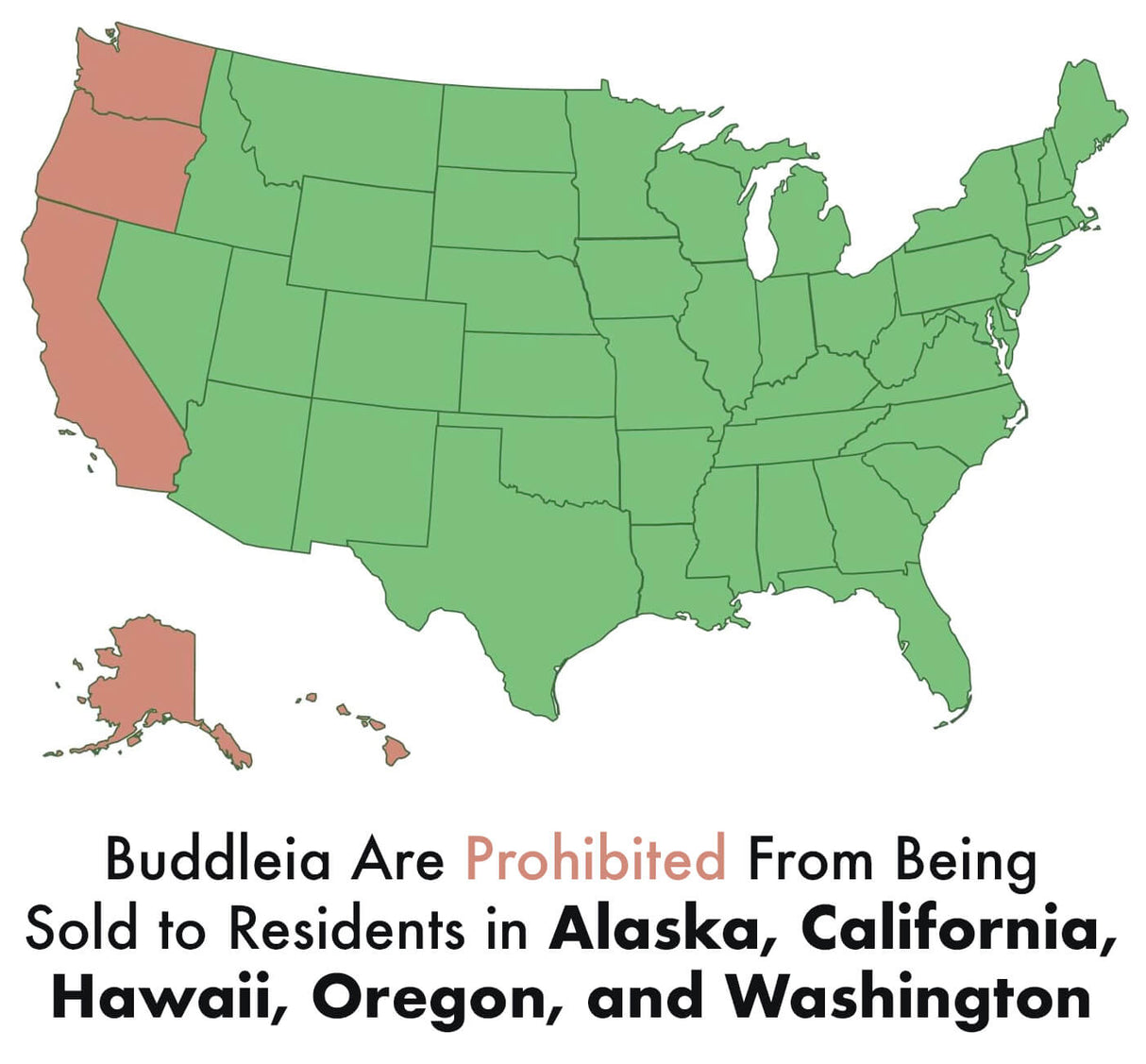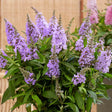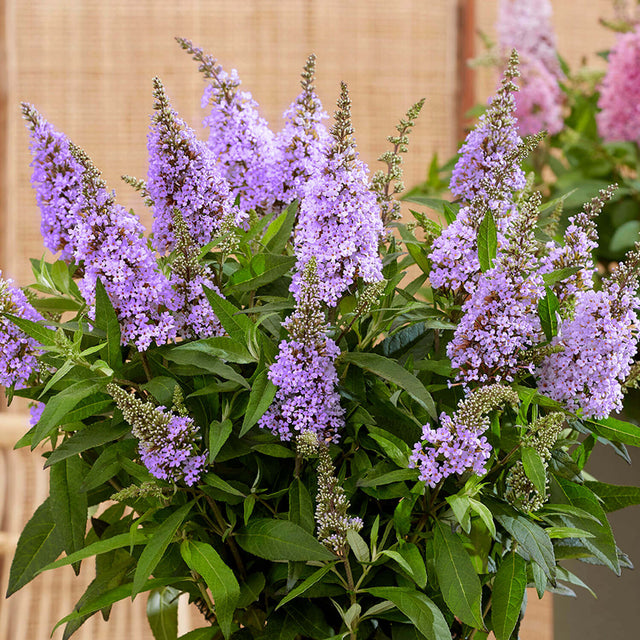Lil' Lavender Butterfly Bush
Lil' Lavender Butterfly Bush - 2.5 Quart is backordered and will ship as soon as it is back in stock.
Description
Description
Lil' Lavender Butterfly Bush has light purple flowers with a light, sweet fragrance that attracts pollinators like butterflies and bees, which is excellent for biodiversity in your garden. All the varieties of Butterfly Candy are well-branched and are ideal for containers and smaller gardens because of their size. These flowering perennials mature to 2–3' high x 2–3' wide. Butterfly Candy butterfly bushes are easy-care, prune-free, and water-wise once established.
Butterfly Candy is a perennial and will produce new foliage in late spring in warmer climates and early summer in colder parts of the country. Lilac purple blooms of Lil' Lavender Buddleia will start to emerge in the summer and continue into fall.
Butterfly Candy Butterfly Bush Care
Sunlight Requirements for Butterfly Bush
Butterfly Candy bushes grow and flower best in full sun to part shade. However, they require a minimum of 8 hours of sunlight. They can grow in partial shade in warmer climates but still need at least 6 hours of sun, or it will reduce their flower production.
Are Buddleia Bushes Cold Hardy?
Buddleia is tolerant to temperatures as low as -20°C and thrives in USDA Zones 5-10, making it viable for most continental United States. However, be patient with buddleia since the shrub might not flush in the spring as soon as other perennials.
Watering Butterfly Bushes
Buddleia plants enjoy moist, well-draining soil that is rich in nutrients. Water weekly during the spring and summer and allow the top layer of soil to dry out between watering to prevent root rot. After your Butterfly Candy is established, it will be a water-wise plant that will only require water during periods of extreme drought.
When to Prune Buddleia
Since new growth appears on new wood, pruning can wait until the new wood is ready to grow in the spring. Be patient with your Butterfly Candy shrub because it flushes later than other perennials.
Deadheading is encouraged with buddleia. Deadheading means that you trim the spent flower spikes to encourage new shoots and flower buds. The practice of deadheading also prevents seeds from forming and dropping from the spent flowers, keeping your Butterfly Candy tidy and compact.
Fertilizing Flowering Buddleia Plants
As a blooming plant, butterfly bushes do well with an all-purpose fertilizer or a rose fertilizer intended to promote blooming. You can apply your fertilizer in the spring and early summer. You shouldn't apply fertilizer after July.
Spacing Recommendations
If you are planting rows of butterfly bushes, you will want to space them about 2-3 feet apart if you desire dense cover. If you're going to show off the mounding habit and provide more space between each fern, plant them at least 4+ feet apart.
Where to Use Butterfly Bushes
Plant your butterfly bush in sunny locations with 6-8 hours of sunlight daily. You can use them as short hedge rows that complement evergreen shrubs like boxwoods, nandinas, gardenias, or distylium. Since these are compact growing perennials, they are perfect for containers and patio gardens.
Planting Instructions
- Dig in your native soil a hole as deep and wide as the container. We recommend planting in native soil for best acclimation.
- Fill the hole with water and thoroughly water the new plant; allow both to drain.
- Gently place the plant on its side and remove the pot. Place your hand on the bottom of the plant and put it in the hole.
- Return native soil around the root ball, wetting and gently tamping down.
- To complete this, create a shallow trench around the base of the plant to contain the water when watering.
- Mulch 1-2" deep around the plant, avoiding the area closest to the stem.
Care & Use
Care & Use
Spacing Recommendations
Spacing Recommendations
-
Scientific Name
-
Hardiness Zone5, 6, 7, 8, 9, 10
-
Sun ExposureFull Sun
-
Evergreen or DeciduousDeciduous
-
FeaturesAromatic, Attracts Birds / Butterflies, Flowering, Heat Tolerant
-
Feature ColorLavender, Purple
-
UsesAccent, Border, Container, Mass Planting
-
Water NeedsMedium
-
Bloom SeasonSummer, Fall
Growing Zones : 5, 6, 7, 8, 9, and 10


Butterfly Candy Butterfly Bush
